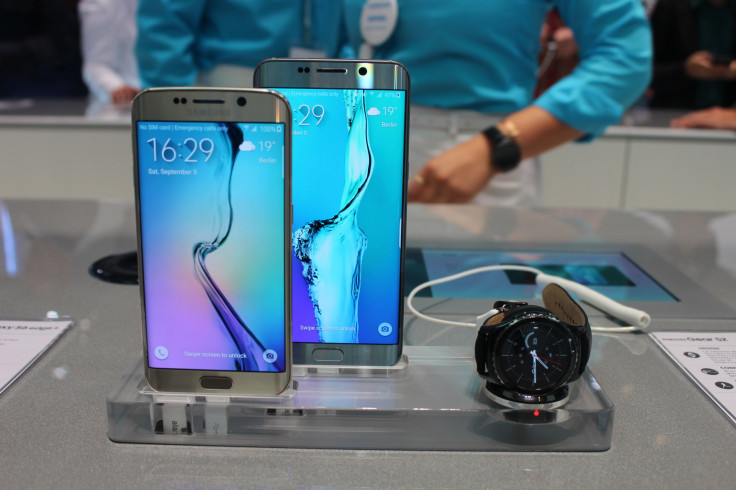Samsung is realizing the old cliché rings true, "the more things change the more they stay the same." The manufacturer made major hardware and design changes to its devices in 2015; an attempt to recapture market share lost to competitors including Apple, Xiaomi and Huawei. However, the absence of pivotal features has caused many diehard Samsung fans to hesitate in purchasing smartphones including the Galaxy S6, Galaxy S6 Edge, Galaxy S6 Edge + and Galaxy Note 5.
But, the rumor mill fully expects Samsung to correct its errors in 2016. A December report from the Wall Street Journal backs up long standing rumors that Samsung plans to reinstate expandable storage to its still unofficial Galaxy S7 smartphone, among other features.
“I believe we will start to see the return of expandable storage with new Samsung flagship devices,” Technology Analyst Patrick Moorhead told iDigitalTimes. “Samsung loyalists felt abandoned by Samsung choice to remove SD storage, particularly when 4K video consumes an incredible amount of space.”
Mid-Range Test Bed
For proof, fans and pundits need look no further than the latest smartphones in Samsung’s lineup, the Galaxy A7 (2016), Galaxy A5 (2016) and Galaxy A3 (2016), which stand as the revamped mid-range to low end devices for the manufacturer’s Eastern markets.
The Samsung Galaxy A7, Galaxy A5 and Galaxy A3 were announced in early December and will likely be showcased during CES in early January. The smartphones all feature a micro SD slot with expandable storage up to 128GB. With the same non-removable back design that Samsung first introduced on its Galaxy Alpha, Galaxy A5 (2015) and Galaxy A3 (2015) smartphones, which launched last October. It appears that Samsung is using its Galaxy A line as a testing bed for what consumers should expect to see in its flagships, which will release in the coming year.
“It’s hard to say right now, but it would make sense as [Samsung] could test reactions to new features without having to commit their complete line and supply chain to it,” Moorhead, who runs Moor Insights & Strategy, said.
Storage Wars
Samsung fans have been extremely vocal about their distaste in the manufacturer’s design and hardware changes on 2015 flagship devices in particular. Samsung opted for more internal storage options on its devices, instead of expandable storage. While admirable, the Apple-eqsue move left consumers complaining about the prices of the Galaxy S6, Galaxy S6 Edge, Galaxy S6 Edge + and Galaxy Note 5, which approached or exceeded $1,000 as storage capacities increased.
Samsung was also one of the main manufacturers to spearhead expandable storage among Android devices. Prior to the 2015 lineup its devices featured polycarbonate designs and removable backs, which allowed for expandable storage and removable batteries. Such features are thought to be defining aspects of OEM Android devices. With Samsung backing away from its original design strategy, rivals including LG and HTC have stepped forward, touting removable backs and expandable storage on their devices as primary features.
At the time, Samsung justified its decision to cut expandable storage by saying the UFS 2.0 storage it used in smartphones like the Galaxy S6 and Galaxy Note 5 was too fast and could not support added storage. However, rumors indicate Samsung has worked out the kinks that would allow UFS 2.0 and micro SD to work together in harmony.
Bigger Isn't Always Better
Google, which has long been against expandable storage, has implemented into its latest software, Android 6.0 Marshmallow, a feature called Flex Storage, which encrypts applications and data stored on micro SD cards; making it indistinguishable from internal storage. “[A] unified storage tier means less complexity and faster speeds,” Moorhead said.
Meanwhile, Samsung’s varied storage options have not been as popular with consumers as the manufacturer expected. After the Galaxy S6 launched in April with 32GB, 64GB and 128GB internal storage options, the Galaxy Note 5 launched in August with only 32GB and 64GB options. Samsung admitted that sales for its highest storage tier of the Galaxy S6 were low.
“If you just look at the mix of any model, not specific necessarily to S6, there’s a very small percent that [use 128GB],” Samsung director of product marketing Drew Blackard told iDigitalTimes at a product briefing prior to the Samsung Galaxy Note 5 launch in August.
More manufacturers have noted that consumers are increasingly utilizing the cloud as a primary storage option, freeing up a considerable amount of storage on devices. “From the research we did even prior to launching S6 was that on 32GB devices your average user used less than half of that,” Blackard said.
Power Up
Though no rumors about the Samsung Galaxy S7 are confirmed, the 2016 flagship may be announced in late February, during the World Mobile Congress timeframe. Another feature that could end up on the Galaxy S6 after being tested on the Galaxy A devices is a higher battery capacity.
The manufacturer was once known for rapidly increasing the milliamperes on its devices with each reiteration; however, the Galaxy S6 features a 2,550-mAh battery and the Galaxy S6 Edge a 2,600-mAh, a 300-mAh decrease from the cell in the 2014 Galaxy S5.
The Samsung Galaxy A7 and Galaxy A5 both have battery capacities higher than the flagship Galaxy S6, 3,300-mAh and 2,900-mAh respectively. The Galaxy A7 even exceeds the Galaxy Note 5 in battery power by 300-mAh.
















